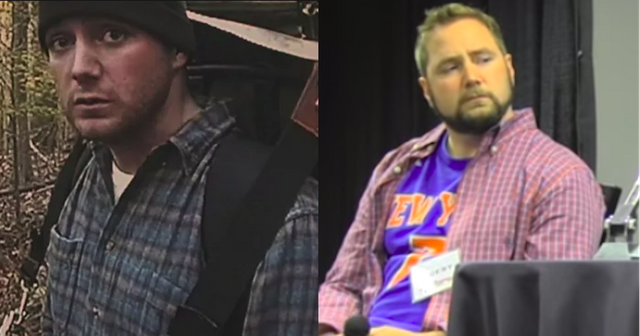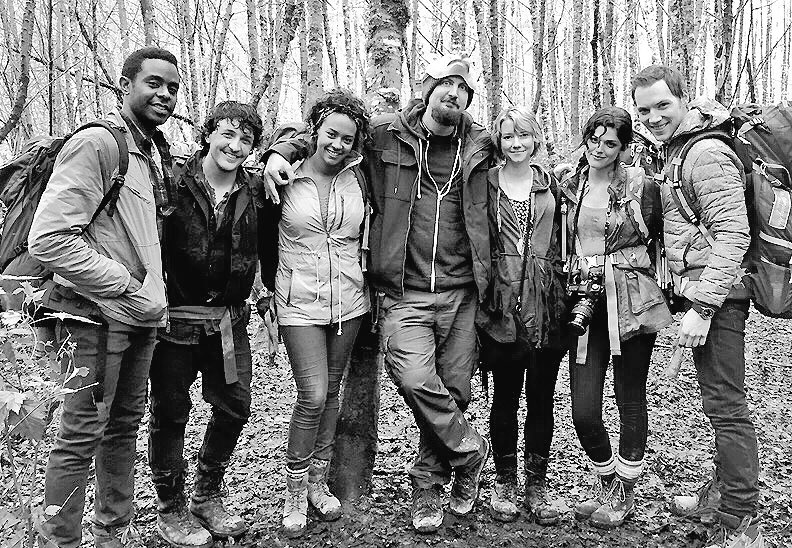
With Paranormal Activity, Unfriendedand The Visit all becoming box office success using small budgets and found footage tropes to tell their stories. Of course, all modern found footage movies owe their existence to Blair Witch. But it is important viewing from a historical standpoint. And with the atmosphere of the marketing campaign forgotten, many feel that the original Blair Witch Project doesn’t hold up today. And because of the prevalence of found footage films released since the original, Blair Witch 2016 ultimately seemed like pointless brand reinforcement.īecause everyone is now fully aware that found footage films aren’t real. Making it ironically seem again like a conventional movie.
#BLAIR WITCH PROJECT CAST PROFESSIONAL#
Using professional actors and multiple high-quality cameras. Because despite its nods to the original the film, this film focused more on jump scares and was more slickly produced. But many didn’t appreciate the typical presentation after the ground-breaking feeling of the original.Īnd while Blair Witch went back to the found footage conceit, even following the originals lead with a viral marketing campaign capitalizing on the secrecy of the production, the film didn’t garner much praise upon release.

#BLAIR WITCH PROJECT CAST MOVIE#
It also attempted to satirise and explore the impact of the first movie and the power of media to influence people.

And it isn’t hard to see why.īook of Shadows traded in the found footage conceit and was shot like a conventional horror movie. Which despite their financial success, never received the same recognition as the original. The film spawned a sequel in 2000, Book of Shadows: Blair Witch 2 and a soft-reboot/sequel in 2016’s Blair Witch. Inevitably for a film that successful, franchise appeal came calling.

All this material combined, made many audiences believe that the film was real and that the actors really were missing, presumed dead. The filmmakers also put up missing posters at film festivals and directed a short mockumentary, disguised as a traditional documentary which aired on the sci-fi channel called The Curse of Blair Witch. The website showed pictures of police investigations, interviews with Heather’s mother and “uncovered” audio clips from their expedition. The filmmakers made a website before the film’s release to play up the legend behind the film. But Blair Witch reached a wider audience and cemented its authenticity in the public’s eyes through its promotional material. Cannibal Holocaust and The Last Broadcast used many of the same tropes to appear real. The Blair Witch Project wasn’t the first found footage film of course. Meaning that much of the acting feels close to reality because, for most of the production, the cast really were living like their characters. And the crew would pull gags on the actors at night such as shaking their tent. Which often encouraged the actors to bicker amongst one another. According to co-director Daniel Myrick, “ Using GPS, we directed them to locations…where they’d leave their footage and pick up food and our directing notes”. To do this, the actors were sent into the woods to film with the filming equipment and a GPS tracker. To push the film’s realism, the directors cast unknown actors and wanted them to improvise all their dialogue. And the film furthered its connection to reality by employing a different kind of filming process to get its performances. But the low-grade film stock, shaky camera, realistic audio, with no score, and no monster made this movie seem like someone’s home movie, not a professional film.

Audiences were used to slickly produced horror films. The Blair Witch Project was among the first movies to use an unprofessional style to create an air of authenticity. It’s hard to believe now, as found footage is a staple of the horror landscape, but the style was once both new and credible.


 0 kommentar(er)
0 kommentar(er)
